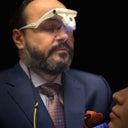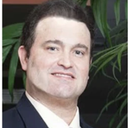I am 54 years old. After menopause, my thick textured hair became thin and flat. I tired Rogaine because the directions said it could possibly restore previous texture. I stopped Rogaine due to blood pressure dropping when I used. I have taken Visical without benefit.
Answers (17)
From board-certified doctors and trusted medical professionals

Dr. Jason Emer, MD
Dermatologic Surgeon, Board Certified in Dermatology
Answer

Dr. Jeff Rapaport, MD
Dermatologic Surgeon, Board Certified in Dermatology
Answer
Dr. Joyce Davis, MD
Dermatologic Surgeon, Board Certified in Dermatology
Answer
More PRP for Hair Loss Questions
See all PRP for Hair Loss Q&AWE SEND PRETTY
EMAILS
What’s trending? Who’s turning heads? Which TikTok myths need busting? We’ve got you. No fluff, no gatekeeping—just real talk. Get our free, unfiltered newsletter.




